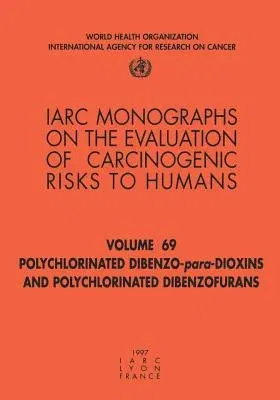Evaluates the carcinogenic risks to humans posed by exposure to
polychlorinated dibenzo-para-dioxins (PCDDs) and polychlorinated
dibenzofurans (PCDFs). PCDDs are formed as inadvertent by-products,
sometimes in combination with PCDFs, during the production of
chlorophenols and chlorophenoxy herbicides, and have been detected as
contaminants in these products. PCDDs and PCDFs may also be produced in
thermal processes such as incineration and metal processing and in the
bleaching of paper pulp with free chlorine. Of the PCDDs: 2 3 7
8-tetrachlorodibenzo-para-dioxin (2 3 7 8-TCDD), or, dioxin, has
attracted the greatest concern.
PCDDs and PCDFs are ubiquitous in soil, sediment, and air, persist in
the environment, and accumulate in animal fat. Excluding occupational
and accidental exposures, most human exposure to these compounds occurs
from the consumption of meat, milk, eggs, fish, and related products.
Occupational exposures at higher levels have occurred since the 1940s as
a result of the production and use of chlorophenols and chlorophenoxy
herbicides and, for PCDFs, in metal production and recycling. Even
higher exposures have occurred in sporadic industrial accidents and
following incidents of rice oil contamination.
The evaluation, which considered abundant human and animal
carcinogenicity data found strong evidence from epidemiological studies
in humans that exposure to 2 3 7 8-TCDD produces increased risks for all
cancer combined, rather than for any specific site, suggesting that 2 3
7 8-TCDD is an unprecedented multi-site carcinogen with no single site
predominating. Citing data from animal studies and other lines of
evidence, the monograph concludes that 2 3 7 8-TCDD is carcinogenic to
humans. Other polychlorinated dibenzo-para-dioxins and
dibenzo-para-dioxin could not be classified as to their
carcinogenicity to humans.
For PCDFs, the evaluation considered evidence from two large poisoning
incidents involving rice oil contamination in Japan and Taiwan. Although
excessive mortality from liver cancer was observed in long-term
follow-up of the Japanese cases, the report cited other factors,
including a high prevalence of chronic hepatitis B infection in the
geographical area concerned, as possible explanations. Evidence of
carcinogenicity to human was judged inadequate. In the absence of
convincing data from experimental animals, PCDFs could not be classified
as to their carcinogenicity to humans.

